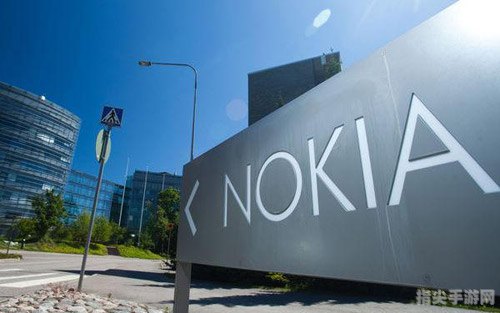Mastering the Progress Bar: A Comprehensive Guide
In the realm of user interfaces and software development, the progress bar stands as a ubiquitous and indispensable element. This simple yet powerful visual tool offers users real-time feedback on the status of ongoing tasks, whether it’s loading a webpage, downloading a file, or processing complex data. Understanding and effectively utilizing the progress bar can greatly enhance the user experience and make your application or website more intuitive and user-friendly. In this comprehensive guide, we’ll delve into the intricacies of the progress bar, exploring its various types, design considerations, implementation techniques, and best practices.
Types of Progress Bars
1、Determinate Progress Bars:
Determinate progress bars are the most common type, displaying a specific percentage or fraction of completion. These bars typically feature a filled segment that grows as the task progresses, providing users with a clear indication of how much longer they need to wait. Determinate progress bars are ideal for tasks with predictable durations, such as file downloads or video playbacks.
2、Indeterminate Progress Bars:
In contrast to determinate bars, indeterminate progress bars do not indicate how much of a task has been completed or how long it will take. Instead, they convey that a process is ongoing and may feature animations to reassure users that the system is working. Indeterminate progress bars are suitable for tasks with uncertain or variable durations, like data processing or complex calculations.
3、Combined Progress Bars:
Combined progress bars offer a hybrid approach, displaying both determinate and indeterminate progress. This type is useful when multiple processes are occurring simultaneously, and you want to show the overall progress while also highlighting individual tasks.
Design Considerations
1、Visual Clarity:
The progress bar should be visually distinct and easy to interpret. Use contrasting colors for the filled and unfilled segments, and ensure the bar is prominent enough to draw the user’s attention without being obtrusive.
2、Responsive Animations:
Animations can add a layer of sophistication and responsiveness to your progress bar. Smooth transitions and subtle movements can enhance the user experience, but avoid overly complex or distracting animations that detract from the bar’s primary function.
3、Labeling and Text:
Accompany your progress bar with clear and concise labeling. Use text to indicate the task being performed, the estimated time remaining, or any relevant status updates. Ensure the text is legible and placed appropriately to maintain a clean and uncluttered interface.
4、Size and Scalability:
Consider the size and scalability of your progress bar. While a larger bar may offer more visibility, it can also consume valuable screen space. Design your bar to be resizable and adaptable to different screen sizes and resolutions.
Implementation Techniques
1、HTML and CSS:
For web-based applications, HTML and CSS provide a straightforward approach to creating progress bars. Utilize HTML elements like <div> or <progress> to structure your bar, and use CSS to style and animate it. CSS properties like width, height, background-color, and transition can be used to customize the appearance and behavior of your bar.
2、JavaScript and AJAX:
For dynamic and interactive progress bars, JavaScript and AJAX come into play. Use JavaScript to calculate and update the progress value based on user interactions or server responses. AJAX can be used to fetch data asynchronously, allowing you to update the progress bar without reloading the entire page.
3、Frameworks and Libraries:
Numerous frameworks and libraries, such as Bootstrap, jQuery UI, and Angular Material, offer pre-built progress bar components that can be easily integrated into your project. These components often come with a range of customization options and are optimized for cross-browser compatibility and accessibility.
Best Practices
1、Accurate Representation:
Ensure your progress bar accurately reflects the actual progress of the task. Avoid overestimating or underestimating the time required, as this can lead to user frustration and distrust.
2、Consistent Behavior:
Maintain consistent behavior across your application or website. If you use a progress bar in one context, consider using it in similar situations to provide a cohesive user experience.
3、Accessibility:
Consider accessibility when designing your progress bar. Ensure it can be used effectively by individuals with visual impairments or other disabilities. Use alt text, ARIA attributes, and keyboard navigation to enhance accessibility.
4、Testing and Feedback:
Thoroughly test your progress bar in different scenarios and gather user feedback. This will help you identify any issues or improvements that need to be made to ensure optimal performance and usability.
By following these guidelines and best practices, you can create an effective and engaging progress bar that enhances the user experience and makes your application or
热门资讯
- 12-13奥拉星邀请码:探索星际奥秘,开启全新冒险
- 12-13csol异乱之战:探索混沌的世界,体验刺激的战斗
- 12-13诺克萨斯之手:战略与荣耀的交织
- 12-13英雄联盟网名:游戏中的个性与荣耀
- 12-13秦时明月盖聂图片 秦时明月:盖聂角色深度解析
- 12-13刀剑封魔录外传:封魔之旅的续篇
- 12-13龙之谷跳房子:探索、挑战与乐趣的完美结合
- 12-13冰封王座升级全解析:新特性与战略变化
精彩专题
热门排行
















